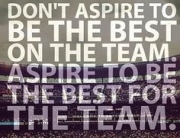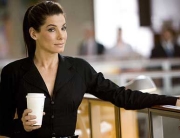 Delivering tough messages is part of the job description as a leader. How do you deliver a tough message? A few years ago I witnessed a senior manager ask a direct report to have an engineer work from a remote location for the day. The manager said that the engineer did not have a valid driver’s license. She asked the manager how did he acquire the job without a valid driver’s license and when did he find out about the situation? The manager said he knew for at least six months but he did not get a chance to share the issue with the team. The manager also stated that the engineer was embarrassed about falsifying his employment application regarding the status of his suspended license. (Yes, HR was questioned as well but that’s another story.)
Delivering tough messages is part of the job description as a leader. How do you deliver a tough message? A few years ago I witnessed a senior manager ask a direct report to have an engineer work from a remote location for the day. The manager said that the engineer did not have a valid driver’s license. She asked the manager how did he acquire the job without a valid driver’s license and when did he find out about the situation? The manager said he knew for at least six months but he did not get a chance to share the issue with the team. The manager also stated that the engineer was embarrassed about falsifying his employment application regarding the status of his suspended license. (Yes, HR was questioned as well but that’s another story.)
- The first perspective of the story is the employee who lied about his license. His fear of being terminated caused him to hide that fact that he had a suspended license. Consequently, his behavior laid a heavier burden on the team since he systematically did not make himself available to travel.
- The second perspective is from the manager’s vantage point. The manager was inclined to protect the employee or his credibility by covering up or flat-out ignoring the issue. As a result, his behavior created more work for the team.
- The last perspective is that of the senior manager. She was bewildered by the thought of having a manager and an employee driven by fear and self-deception. Both parties were under a guise of self-deception, believing that the problem will work itself out in time. Problems of this nature don’t automatically get rectified…they get magnified. When we let small problems grow into monsters we lose credibility as leaders and the entire organization suffers.
As we evaluate each viewpoint, a common theme of trust comes to the forefront. We all have a part in building a safe environment so tough messages can be brought to the forefront for discussion.
Think about:
- What would the outcome look like if we build rapport from the start of each relationship between the involved parties?
- How important is building a culture of candor?
- Are the right people involved to collect the facts and help bridle emotions?
- What does a “win – win” outcome look like?
“Depending on the challenge, there may be multiple options to reach a resolution; however we should consider collaboration instead of isolation when making the final decision.”






